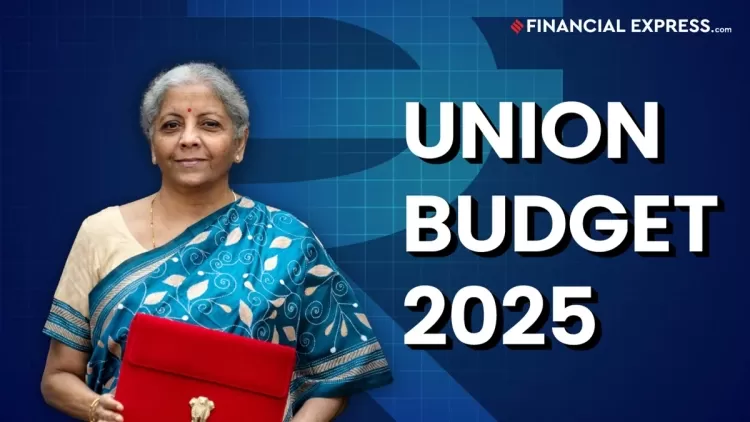Budget 2025: Key Initiatives to Boost Affordable Housing, Tourism, and Employment Growth
The 2025 Union Budget introduces several significant measures aimed at enhancing affordable housing, promoting tourism, and creating employment opportunities. The government is building on the success of previous housing schemes and launching new initiatives to foster private sector participation, support skill development, and boost tourism infrastructure. These moves are designed to uplift the middle class, improve connectivity, and strengthen India's position as a global tourism hub.

The 2025 Union Budget unveiled by Finance Minister Nirmala Sitharaman continues the government’s focus on affordable housing, tourism growth, and employment generation, providing a comprehensive framework for long-term economic benefits. With significant allocations for housing, skill development, and tourism infrastructure, the budget aims to create substantial opportunities for the middle class and youth while contributing to India's overall growth. Let’s take a closer look at some of the key initiatives that were announced:
1. Affordable Housing: Completion of Stressed Housing Projects and Introduction of Swami Fund 2
Under the Special Window for Affordable and Mid-Income Housing, the government reported that 50,000 dwelling units in stressed housing projects have been completed, with keys handed over to homebuyers. This initiative has been a major relief for middle-class families who were paying EMIs on home loans while also renting other homes. The success of this program is being extended with the establishment of the Swami Fund 2, a blended finance facility that will expedite the completion of an additional 100,000 units.
Swami Fund 2, with a total corpus of ₹15,000 crores, will be funded through contributions from the government, banks, and private investors. This new fund aims to fast-track the completion of affordable housing projects, easing the burden on families who are currently caught in the dual financial strain of paying mortgages and rents. The fund will serve as a catalyst for addressing the housing needs of India’s rapidly growing middle class.
2. PM GTI Shakti Data: Empowering Private Sector through Public-Private Partnerships (PPP)
To strengthen the role of the private sector in infrastructure development, the government announced the launch of PM GTI Shakti data for private sector use. This initiative aims to promote Public-Private Partnerships (PPPs) by providing private entities with access to key project planning data and relevant maps through the PM GTI Shakti portal. By facilitating better project planning and execution, this initiative is expected to attract private investments, foster innovation, and expedite infrastructure development across India.
In addition to housing and infrastructure, this initiative will contribute to the development of vital projects by leveraging the expertise and efficiency of private companies. The ease of access to important data will help private investors make informed decisions, reduce project costs, and improve overall project timelines.
3. Tourism for Employment Growth: Developing Top Tourist Destinations
Tourism is expected to play a key role in India's economic growth, particularly in terms of employment generation. The 2025 budget outlines plans for developing the top 50 tourist destinations across the country in partnership with state governments. This will be done through a challenge mode where states will be encouraged to provide the necessary land for key infrastructure development.
The hotels and other amenities in these destinations will be included in the infrastructure harmonized list, which will streamline approvals and funding processes for their development. Additionally, the government will offer performance-linked incentives to states that manage tourist destinations effectively. These incentives will focus on improving cleanliness, amenities, and marketing efforts, thereby creating a better experience for tourists and ensuring long-term sustainability.
Further support will be provided through intensive skill development programs aimed at the youth, including programs within hospitality management institutes. The government’s push for skill development, in line with the country’s tourism growth, will create vast employment opportunities in the hospitality sector. Furthermore, the introduction of Mudra loans for homestays and improved travel and connectivity infrastructure will enable local entrepreneurs and small businesses to capitalize on the growing tourism industry.
4. Promotion of Spiritual and Religious Tourism: Focus on Lord Buddha’s Life and Times
A special focus will be placed on tourism related to the life and times of Lord Buddha, with specific emphasis on spiritual and religious destinations. These efforts are aimed at drawing international tourists to India and highlighting the country’s rich cultural heritage. The development of these destinations will include a comprehensive approach to preserving historical landmarks while modernizing amenities for visitors.
The budget also reflects the government’s ongoing commitment to promoting medical tourism through initiatives like "Heal in India." This will be done in collaboration with the private sector and will focus on enhancing India’s appeal as a global hub for medical tourism. By focusing on health tourism, the budget aims to increase India’s healthcare infrastructure capacity while promoting wellness tourism, which has seen a surge in recent years.
5. Streamlined Visa and Connectivity Measures for Tourism
Recognizing the need to make travel to India easier for tourists, the budget proposes the introduction of streamlined Electronic Visas (eVisas) and visa fee waivers for specific tourist groups. These measures aim to simplify the visa application process, making it more convenient for international tourists to visit India. This, in turn, is expected to boost inbound tourism and enhance the country’s position as a prime global tourist destination.
Along with the visa reforms, the government will also focus on improving the connectivity to popular tourist destinations through better transport infrastructure. This will include enhanced road, rail, and air networks, making it easier for tourists to access remote and lesser-known tourist spots.
6. Support for Private Sector and PPPs in Tourism and Hospitality
The development of tourism destinations and related infrastructure will be driven in partnership with states, private investors, and the government. By incentivizing private players to invest in hospitality and tourism-related infrastructure, the budget aims to make India’s tourism sector more competitive globally. This will also contribute to creating new jobs, especially in rural and remote areas where tourism potential is often untapped.
The government’s strategy of blending private investments with public sector involvement is intended to modernize tourism infrastructure while ensuring that state governments play a proactive role in the planning and development process. This collaborative approach will ensure that tourism growth aligns with local development priorities and is sustainable in the long term.
Conclusion
The 2025 Union Budget lays a strong foundation for expanding India’s affordable housing sector, developing tourism infrastructure, and creating employment opportunities for the youth. The introduction of the Swami Fund 2, PM GTI Shakti data portal, and the focus on spiritual and medical tourism are key steps in transforming India into a global hub for investment, tourism, and employment.
These measures not only address immediate housing and employment challenges but also pave the way for sustainable development and economic growth in the coming years. As the government continues to push for a more inclusive economy, the budget’s emphasis on affordable housing, tourism, and skill development is likely to have far-reaching impacts, improving the quality of life for millions of citizens across the country.
What's Your Reaction?

















